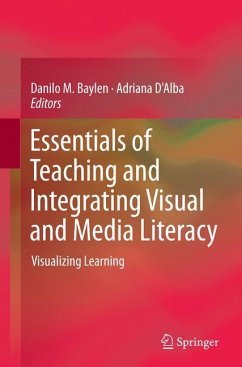
Integrating computers for sustainable use in schools
A case study in South Africa
Versandkostenfrei!
Versandfertig in 6-10 Tagen
52,99 €
inkl. MwSt.

PAYBACK Punkte
26 °P sammeln!
The integration of computers into school curricula has traditionally been seen as fostering sustainability by adhering to a taxonomy of discrete influences. Yet, even in developed countries, adherence to such taxonomies has often not led to sustainability. This book argues that the reason for such failure is caused by the inability of planners, strategists and implementers to recognise such integration projects as taking place within nested, dynamic complex systems which are inextricably situated in yet larger, overlapping systems. The book provides a new conceptual framework which will enable...
The integration of computers into school curricula
has traditionally been seen as fostering
sustainability by adhering to a taxonomy of discrete
influences. Yet, even in developed countries,
adherence to such taxonomies has often not led to
sustainability. This book argues that the reason for
such failure is caused by the inability of planners,
strategists and implementers to recognise such
integration projects as taking place within nested,
dynamic complex systems which are inextricably
situated in yet larger, overlapping systems. The
book provides a new conceptual framework which will
enable planners and practitioners to identify
influences on the sustainability of projects which
seek to integrate technology in school curricula.
This framework should be of use to educational
planners in government departments, school
principals and all teachers who wish to integrate
technology into their pedagogical practices -
particularly those in developing countries.
has traditionally been seen as fostering
sustainability by adhering to a taxonomy of discrete
influences. Yet, even in developed countries,
adherence to such taxonomies has often not led to
sustainability. This book argues that the reason for
such failure is caused by the inability of planners,
strategists and implementers to recognise such
integration projects as taking place within nested,
dynamic complex systems which are inextricably
situated in yet larger, overlapping systems. The
book provides a new conceptual framework which will
enable planners and practitioners to identify
influences on the sustainability of projects which
seek to integrate technology in school curricula.
This framework should be of use to educational
planners in government departments, school
principals and all teachers who wish to integrate
technology into their pedagogical practices -
particularly those in developing countries.












